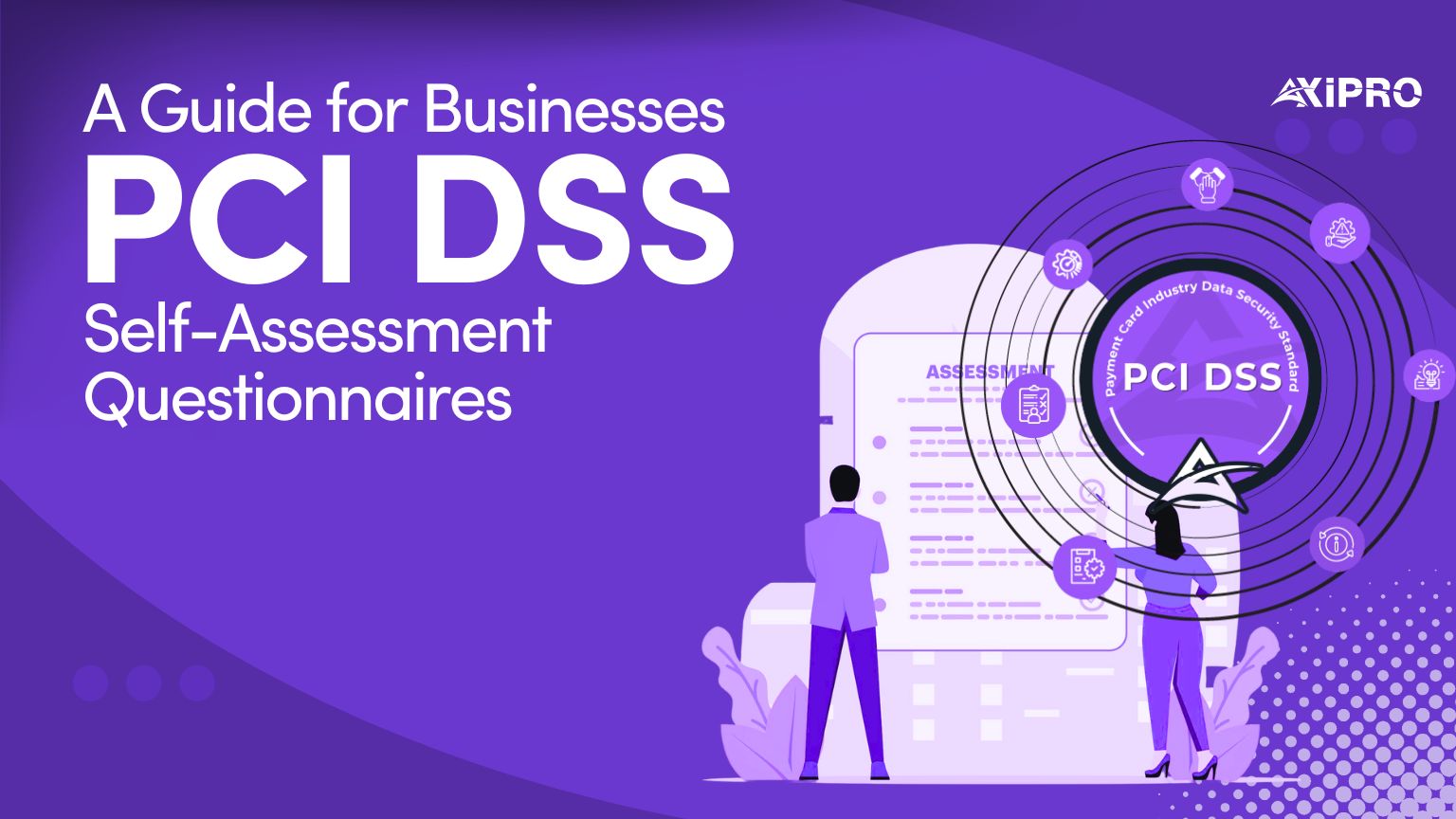
Share This Post
Nowadays, securing payment card data is the most important thing for a business.Whether you are running a retail store, an e-commerce store, or any other business that processes card payments; you need to achieve PCI DSS Compliance for sure. However, we understand that for many businesses the PCI DSS Self Assessment Questionnaire can seem overwhelming.
At Axipro, we simplify compliance by providing tailored solutions that align with your business goals. In this blog, we will discuss the PCI DSS SAQ that will help you to understand its purpose and types and also how to navigate it effectively.
Outline
- PCI DSS and SAQ: What Exactly They Are? 2
- PCI DSS—A Briefing 2
- What is the PCI DSS Self-Assessment Questionnaire (SAQ)? 2
- Companies that are required to fill out the SAQ are: 2
- Types of PCI DSS SAQs 2
- Steps to Complete the PCI DSS SAQ 4
- Some Typical Challenges of Filling in the SAQ 4
- How Axipro Can Assist
- Conclusion
PCI DSS and SAQ: What Exactly They Are?
PCI DSS—A Briefing
The Payment Card Industry Data Security Standard (PCI DSS) is an international security standard used to secure credit card information. It is required by leading card networks such as Visa, Mastercard, and American Express to guarantee companies process cardholder data securely.
What is the PCI DSS Self-Assessment Questionnaire (SAQ)?
The PCI DSS SAQ is a tool whereby organizations can evaluate their compliance with PCI DSS without the need for a formal audit. It is intended for businesses that accept card payments but don’t need a complete Qualified Security Assessor (QSA) audit.
Any company that stores, processes, or transmits credit card information is required to adhere to PCI DSS. But if you are a small business or a company with a third-party payment processor, you might be eligible for self-assessment rather than a full audit.
Companies that are required to fill out the SAQ are:
- Online merchants with third-party payment gateways
- Physical stores accepting payments through POS systems
- Service providers that process card transactions
Types of PCI DSS SAQs
There are various SAQ types depending on how a business processes payment card transactions. Proper selection of an SAQ is critical for valid compliance reporting.
SAQ A
For entities that completely outsource payment processing to a third party that is PCI compliant. These entities neither store, process, nor transmit cardholder information.
Example: An online retailer utilizing PayPal or Stripe for making transactions.
SAQ A-EP
For e-commerce traders who outsource payment processing but retain some aspects of the payment page.
Example: A company utilizing a hosted payment form that sends to a third party but includes an aspect of interaction on its site.
SAQ B
For companies utilizing standalone dial-out terminals without internet.
Example: A small retail shop with a standard card terminal that connects through phone lines.
SAQ B-IP
For companies utilizing stand-alone payment terminals with internet access but without storing cardholder data.
Example: A restaurant employing an internet-enabled card reader but without storage.
SAQ C-VT
For companies processing transactions through virtual terminals and not storing card data.
Example: A small company utilizing a web-based payment portal for manual entry.
SAQ C
For merchants employing internet-enabled payment applications but without storage of card data.
Example: An organization utilizing an online payment application that securely handles transactions online.
SAQ P2PE
For merchants utilizing Point-to-Point Encryption (P2PE) products that are validated by PCI SSC.
Example: A merchant utilizing a PCI-validated P2PE terminal.
SAQ D
For merchants who fall outside the preceding categories and retain, process, or transmit cardholder data.
Example: An organization keeping customer credit card information for billable subscriptions.
Steps to Complete the PCI DSS SAQ
Step 1: Determine the Right SAQ Type
Review your business operations and payment processing methods to select the appropriate SAQ type. If unsure, Axipro can assist in determining the correct SAQ for your business.
Step 2: Review PCI DSS Requirements
Each SAQ includes specific security requirements. These typically involve
- Secure network configurations
- Strong access control measures
- Data encryption protocols
- Monitoring and testing networks
Step 3: Conduct a Risk Assessment
Conduct a gap analysis to determine whether there are weaknesses in your security procedures. This assists in mitigating vulnerabilities prior to finishing the SAQ.
Step 4: Install Necessary Security Controls
Make sure that your business adheres to all relevant PCI DSS requirements. This can include:
- Firewall and security updates
- Limiting access to cardholder data
- Regular security awareness training
Step 5: Finish the SAQ and Attestation of Compliance (AOC).
Once you have put controls in place as required, finish the SAQ and file the Attestation of Compliance (AOC) with your acquiring bank or payment processor.
Some Typical Challenges of Filling in the SAQ
1. Technical Knowledge
Most companies get bogged down by the technical aspects of PCI DSS. We make this easy for you at Axipro by offering unambiguous instructions and professional assistance.
2. Inaccurate Determination of SAQ Type
Selecting the incorrect SAQ can result in compliance failures. We assist companies in selecting the correct SAQ to prevent unnecessary compliance overhead.
3. Security Gaps
Inadequate implementation of security controls can result in audit failures. We help conduct gap analyses to ensure companies comply with all required security controls.
4. Documentation and Record-Keeping
Having detailed documentation is important for compliance. We offer templates and best practices for record-keeping to make the process easier.
How Axipro Can Assist
At Axipro, we are experts at assisting companies in becoming and remaining PCI DSS compliant with ease. Our services are:
- SAQ Guidance: We assist companies in identifying the right SAQ and filling it out correctly.
- Gap Analysis: Identifying weaknesses and offering corrective action plans.
- Security Policy Development: Helping with the development of PCI-compliant security policies.
- Penetration Testing & Risk Assessments: Making sure your systems are secure from threats.
- Continuous Compliance Support: Regular compliance checks and updates to make your business safe.
Through our experience, companies can automate the compliance process, minimize risks, and concentrate on growth without concerning themselves with security risks.
Conclusion
Working through the PCI DSS Self-Assessment Questionnaire is not always simple, but it is necessary for payment security and the prevention of penalties. Familiarity with the types of SAQs, utilizing a methodical process, and enforcing the required security controls ensures that companies obtain PCI DSS compliance effectively.
At Axipro, we simplify compliance for you through expert advice, security products, and support. Are you in need of PCI DSS compliance assistance? Contact us now so your business is safe and compliant.


